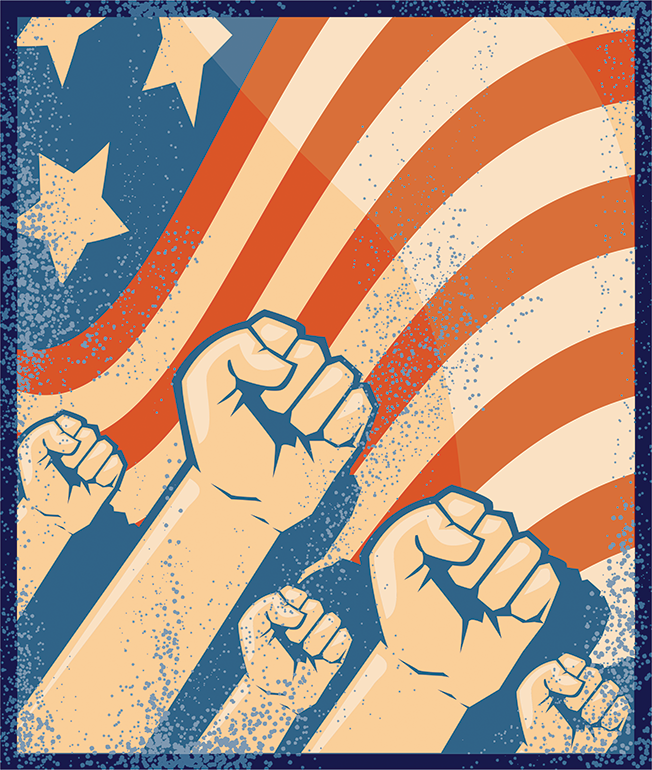Inspiration meets innovation at Brandweek, the ultimate marketing experience. Join industry luminaries, rising talent and strategic experts in Phoenix, Arizona this September 23–26 to assess challenges, develop solutions and create new pathways for growth. Register early to save.
Programmatic is the most important advertising advancement of the 2016 election cycle—but it's not solely because of the technology.
Programmatic has enabled brand advertisers to effectively reach audiences in real time, and now political candidates can do the same. But no matter how accurate the data and how complex the targeting, any campaign without a piece of creative that elicits an emotional response from people is all for naught. On the other side of all that technology is, ultimately, a voter. And voters, much more so than consumers, are motivated to action by having formed emotional connections.

C. Sean McCullough
There's been a pervading fear that programmatic technology will lead to the decline of advertising jobs, that robots will replace ad execs. These dystopian themes didn't start with The Hunger Games. Kurt Vonnegut preceded these with his novel Player Piano in 1952. When the player piano was introduced, it was taken as a real threat to the role of the musician.
In hindsight, this seems absurd. New technologies generally become available faster than old technologies are automated. We need people to master newly innovated instruments as much as we need people to develop the next technologies. The panic over job loss is simply not legitimate. At a deeper level, music and art endure because of the emotional connectivity between artist and audience, and because only human creativity can spark those types of deep connections—regardless of the technology used to deliver it.
Programmatic technology has given advertisers the power to utilize user data to decide exactly where and when to engage viewers. What's more, the technology empowers advertisers with the ability to adjust their campaigns on the fly, changing copy or retargeting to different areas or demographics at the click of a button. Further advances now allow advertisers to receive instantaneous feedback—viewers ignoring, clicking away or engaging—and retool their second approaches appropriately. Programmatic also means incredibly detailed analytics can be broken down by specific categories such as age, location and, yes, even political leanings. The political opportunity here is massive—candidates respond to changing circumstances and adjust their messages accordingly as the political playing field unfolds.
Incredibly precise targeting means savvy campaigners can eliminate huge inefficiencies and help reduce bloated campaign budgets. Custom messages can be crafted to hit exactly the right eyes at the right time, meaning no more wasted, ineffective buys and more budget freed up for even more high-quality placement. Oversaturation or ad fatigue, a common problem with traditional political TV ads, can be avoided with intelligent algorithms, frequency modeling and customized creative that makes sure voters aren't burnt out on a particular message.
So computers can automatically deliver messages at exactly the right time to exactly the right people, and even respond to viewer reactions. Why do we even need humans running political campaigns anymore? The same reason we still have human pianists. All the targeting in the world means nothing if the creative doesn't connect the viewer with the candidate. Carnegie Hall is not sold out to people coming to see player pianos, even if that player piano can play all the notes to Chopin in the right order. It's impossible to create human connection with automata.
Good creative is the flourish, the triumphant cadenza that catalyzes an emotional response in viewers and makes them connect with the candidate. That requires a human touch. Technology has not removed the artistry from the business, but in fact has afforded the advertiser with more time, tools and resources to craft the perfect creative message.
The rate of unforeseen technological innovation will continue to quicken, giving us more new tools and opportunities to drive the human connections required of any successful advertising campaign. This election cycle, programmatic is no longer confined to digital ads on a desktop. Instead, it has adapted to our ever-changing human behavior, and has taken full advantage of the full spectrum of devices we use, including mobile, which is the next horizon on the programmatically creative political landscape.
But imagine a day when your TV ads, your radio ads and even billboards or front-yard campaign signs are all customized specifically for you. You won't have to imagine this for much longer. Programmatic technology will only grow and spread, and soon enough, static, generic advertising will be in the minority.
In 2020, what I'm calling programmatic will simply be called advertising, and even more amazing technologies will exist to connect candidates to voters. But they will all hinge on the same linchpin: good creative able to form an emotional connection that drives real and measurable action in constituents.
Don't forget to vote.
C. Sean McCullough (@AOLAdvertising) is regional director of sales at AOL Advertising.
This story first appeared in the April 4 issue of Adweek magazine. Click here to subscribe.








